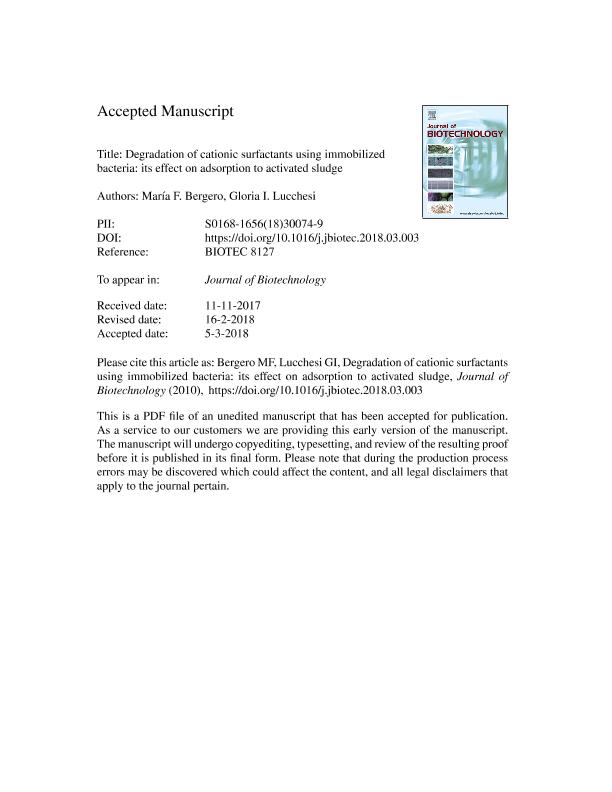Artículo
Degradation of cationic surfactants using immobilized bacteria: Its effect on adsorption to activated sludge
Fecha de publicación:
20/04/2018
Editorial:
Elsevier Science
Revista:
Journal of Biotechnology
ISSN:
0168-1656
e-ISSN:
1873-4863
Idioma:
Inglés
Tipo de recurso:
Artículo publicado
Clasificación temática:
Resumen
Adsorption of cationic surfactants (QACs) Br-tetradecyltrimethylammonium (TTAB), Cl-tetradecylbenzyldimethylammonium (C14BDMA) and Cl-hexadecylbenzyldimethylammonium (C16BDMA) to activated sludge from a wastewater treatment plant was tested. Adsorption equilibrium was reached after 2 h, and for initial 200 mg L−1 81%, 90% and 98% of TTAB, C14BDMA and C16BDMA were respectively adsorbed. After six successive desorption cycles, 21% of TTAB and 12.7% of C14BDMA were desorbed from the sludge. In agreement with the percentage of QACs pre-adsorbed, the more hydrophobic the compound, the lesser the extent of desorption. Wastewater samples with activated sludge were supplemented with TTAB 200 mg L−1 and Ca-alginate beads containing the QACs-degrading microorganisms Pseudomonas putida A (ATCC 12633) and Aeromonas hydrophila MFB03. After 24 h, 10 mg L−1 of TTAB were detected in the liquid phase and 6–8 mg L−1 adsorbed to the sludge. Since without Ca-alginate beads or with empty beads total TTAB amount (phase solid and liquid) did not change, the 90% reduction of the initial 200 mg L−1 after treatment with immobilized cells was attributed to the bacterial consortium's capacity to biodegrade QACs. The results show the advantages of using immobilized bacteria to achieve complete QACs elimination from wastewater systems, thus preventing them from reaching the environment.
Palabras clave:
ACTIVATED SLUDGE
,
ADSORPTION
,
BIODEGRADATION
,
CATIONIC SURFACTANTS
Archivos asociados
Licencia
Identificadores
Colecciones
Articulos(CCT - CORDOBA)
Articulos de CTRO.CIENTIFICO TECNOL.CONICET - CORDOBA
Articulos de CTRO.CIENTIFICO TECNOL.CONICET - CORDOBA
Citación
Bergero, Maria Fernanda; Lucchesi, Gloria Ines; Degradation of cationic surfactants using immobilized bacteria: Its effect on adsorption to activated sludge; Elsevier Science; Journal of Biotechnology; 272-273; 20-4-2018; 1-6
Compartir
Altmétricas




